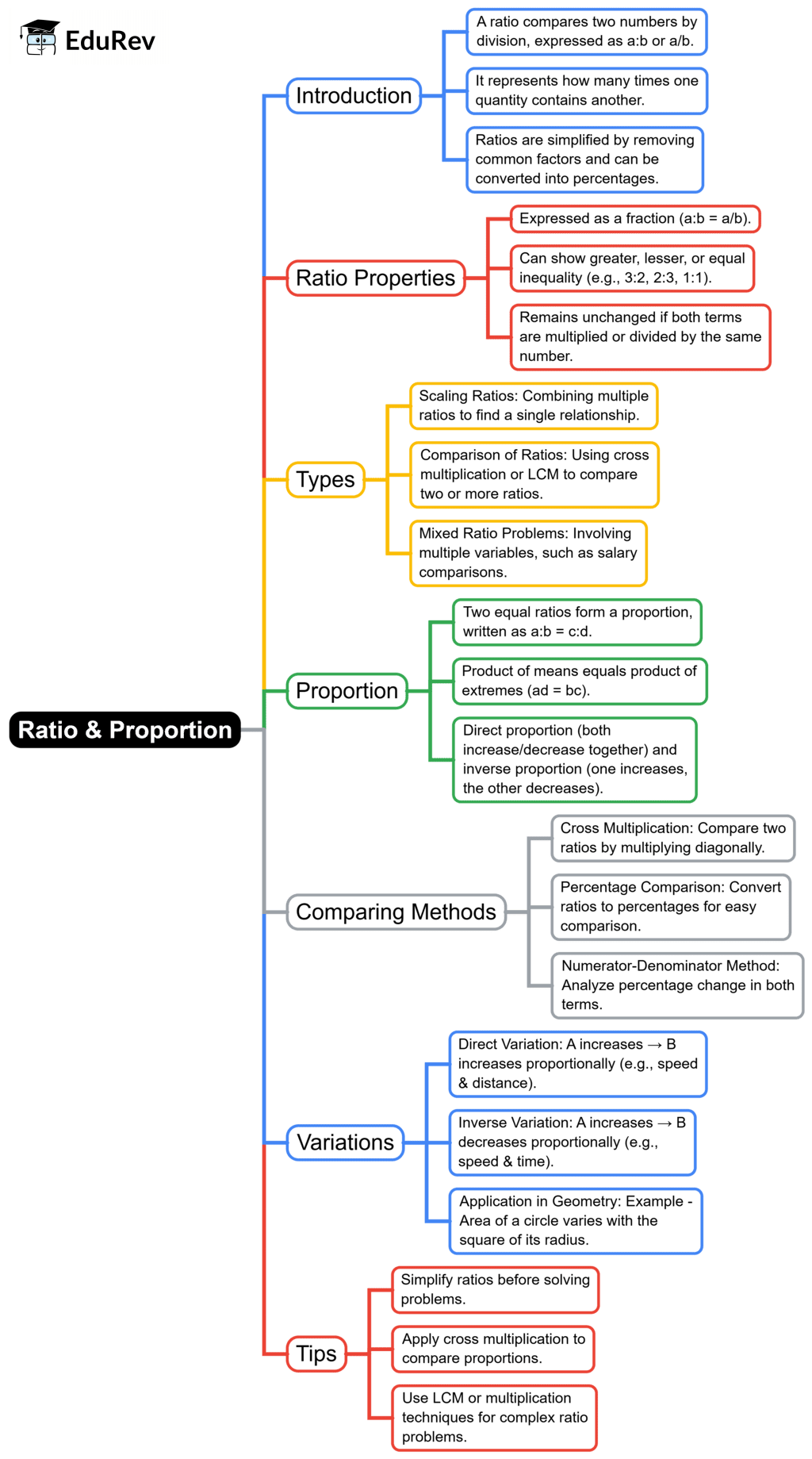UGC NET Exam > UGC NET Notes > Mathematical Reasoning and Aptitude for UGC NET > Mind Map: Ratio & Proportion
Mind Map: Ratio & Proportion | Mathematical Reasoning and Aptitude for UGC NET PDF Download

The document Mind Map: Ratio & Proportion | Mathematical Reasoning and Aptitude for UGC NET is a part of the UGC NET Course Mathematical Reasoning and Aptitude for UGC NET.
All you need of UGC NET at this link: UGC NET
|
46 videos|95 docs|42 tests
|
FAQs on Mind Map: Ratio & Proportion - Mathematical Reasoning and Aptitude for UGC NET
| 1. What is the importance of understanding ratios and proportions for the UGC NET exam? |  |
Ans.Understanding ratios and proportions is crucial for the UGC NET exam as it forms a fundamental part of quantitative aptitude. These concepts are often tested in various subjects, including Mathematics and General Studies, and help in solving problems related to data interpretation, comparison, and analytical reasoning.
| 2. How are ratios and proportions applied in real-life situations? |  |
Ans.Ratios and proportions are widely used in everyday life, such as in cooking (adjusting recipes), finance (calculating interest rates), and in various professions (like engineering and statistics). They help in making comparisons and understanding relationships between different quantities, which is essential for practical decision-making.
| 3. What types of questions can be expected on ratios and proportions in the UGC NET exam? |  |
Ans. In the UGC NET exam, questions on ratios and proportions may include solving problems involving direct and inverse proportions, word problems that require setting up ratios, and questions that involve scaling and comparisons. These can be both numerical and theoretical in nature, testing the candidate's comprehension and application skills.
| 4. Can you provide a simple example illustrating the difference between a ratio and a proportion? |  |
Ans.A ratio is a comparison of two quantities, expressed as "a:b" (e.g., if there are 2 apples and 3 oranges, the ratio is 2:3). A proportion, on the other hand, states that two ratios are equal (e.g., if 2:3 = 4:6, then these ratios are in proportion). Understanding this difference is essential for solving related problems in exams.
| 5. What strategies can be used to solve ratio and proportion problems effectively? |  |
Ans.To solve ratio and proportion problems effectively, candidates can use strategies such as simplifying ratios to their lowest terms, cross-multiplying to check proportions, and setting up equations based on the relationships expressed in the problems. Practicing a variety of problems can also help build confidence and speed in answering these questions during the exam.
Related Searches





















